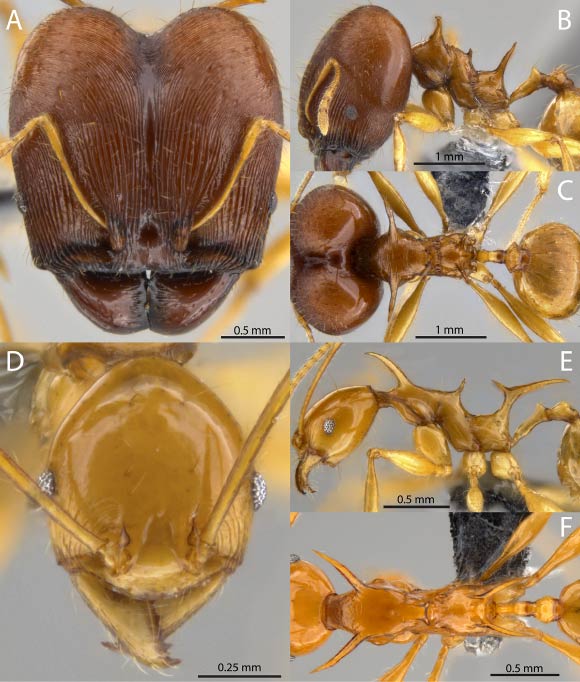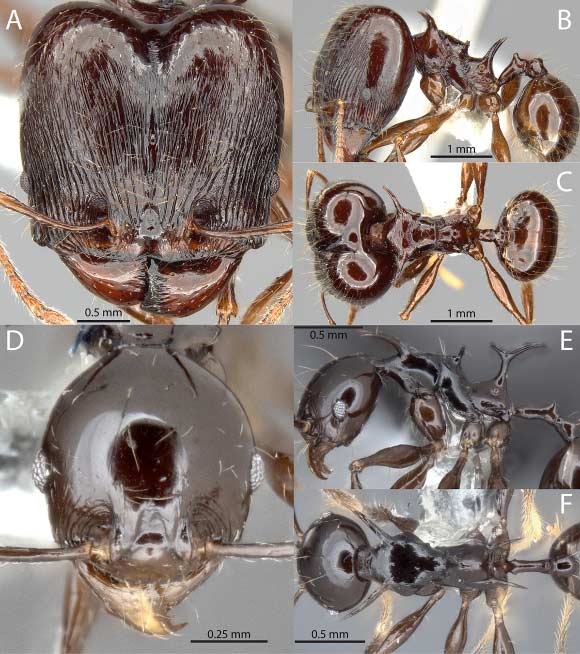A group of Japanese entomologists has described and named four new species of the ant genus Pheidole from the tropical rainforests of Papua New Guinea and the Fijian islands.
Pheidole is a highly diverse genus of ants, with over 1,000 species recognized so far. The genus has the common name of ‘big headed ants,’ as Pheidole soldier ants usually have huge heads and jaws to break up large food items.
Dr. Eli Sarnat, Dr. Georg Fischer and Dr. Evan Economo from the Okinawa Institute of Science and Technology Graduate University incorporated phylogenetic results and a cutting edge 3D imaging technique to identify and model ants in the Pheidole cervicornis group.
“We present our research on the most spinescent of all 1,000 plus Pheidole known to science,” they said.
“We used 3D X-ray microtomography to illustrate these extreme phenotypes, and to investigate the functional morphology of spinescence.”
Amongst the Pheidole ants, the scientists discovered two new, highly adorned, dragon-like species – P. viserion and P. drogon — with distinctive large spines protruding from their dorsal plates.
The scientific name of Pheidole drogon refers to Drogon, the black-colored dragon of Daenerys Targaryen, a fictional character from the George R. R. Martin’s novel ‘A Song of Ice and Fire’ and TV series ‘Game of Thrones.’
The name of Pheidole viserion refers to Viserion, the cream and gold colored dragon of the same fictional character.
Entomologists previously assumed that the spiky appearance of certain ant species was a defense mechanism. However, the team used micro-CT to reveal that in soldier ants of Pheidole viserion and P. drogon, neck spines contain muscle fibers.
“Muscles in the spines may help these ants to hold up their massive heads,” the researchers said.
They have documented their discovery in a paper published in the journal PLoS ONE.
In a related study, they described two additional new species of ants from the Pheidole knowlesi species group found in the Fijian Islands.
In contrast to their highly adorned New Guinean relatives, Pheidole ululevu and P. kava have a much less dramatic appearance, and were named after their large head and a drink from the Pacific Islands, respectively.
_____
Sarnat E.M. et al. 2016. Inordinate Spinescence: Taxonomic Revision and Microtomography of the Pheidole cervicornis Species Group (Hymenoptera, Formicidae). PLoS ONE 11 (7): e0156709; doi: 10.1371/journal.pone.0156709
Fischer G. et al. 2016. Revision and Microtomography of the Pheidole knowlesi Group, an Endemic Ant Radiation in Fiji (Hymenoptera, Formicidae, Myrmicinae). PLoS ONE 11 (7): e0158544; doi: 10.1371/journal.pone.0158544









